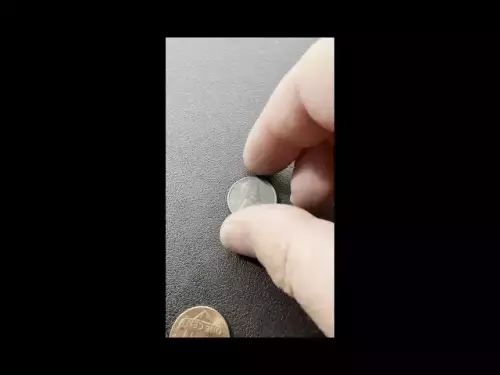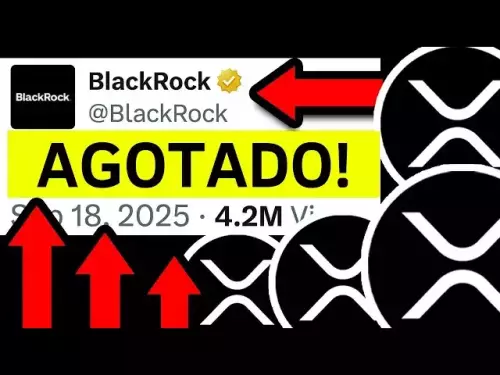-
 bitcoin
bitcoin $115761.354377 USD
-1.37% -
 ethereum
ethereum $4475.268687 USD
-2.95% -
 xrp
xrp $2.997758 USD
-2.97% -
 tether
tether $1.000517 USD
0.02% -
 bnb
bnb $986.306400 USD
-0.03% -
 solana
solana $239.777963 USD
-3.17% -
 usd-coin
usd-coin $0.999885 USD
0.01% -
 dogecoin
dogecoin $0.266431 USD
-5.31% -
 tron
tron $0.344054 USD
-2.27% -
 cardano
cardano $0.895891 USD
-3.84% -
 hyperliquid
hyperliquid $56.136248 USD
-3.59% -
 chainlink
chainlink $23.595739 USD
-4.88% -
 avalanche
avalanche $33.902799 USD
-4.84% -
 ethena-usde
ethena-usde $1.001134 USD
0.02% -
 sui
sui $3.673881 USD
-5.41%
What does it mean when the moving average system switches from a bullish pattern to a sticking pattern?
A shift from bullish to sticking moving average patterns signals weakening momentum and market indecision, prompting traders to reassess positions and prepare for potential consolidation or reversal.
Sep 20, 2025 at 05:18 am
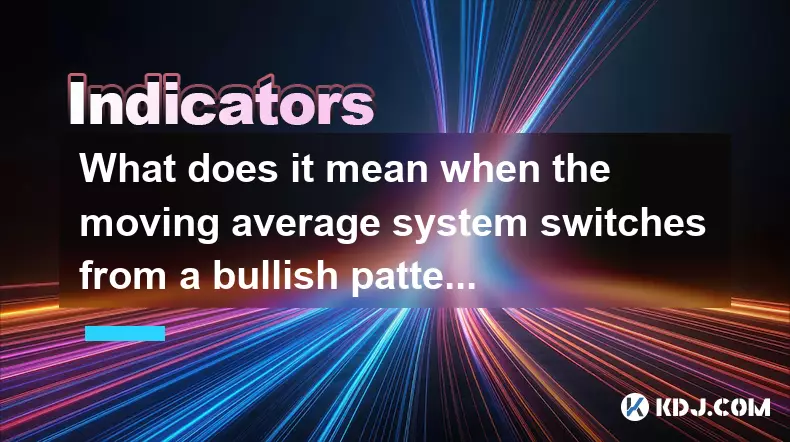
Understanding the Shift in Moving Average Patterns
1. A transition from a bullish pattern to a sticking pattern in a moving average system signals a potential loss of upward momentum in an asset’s price trend. In a typical bullish setup, shorter-term moving averages trade above longer-term ones, reflecting sustained buying pressure and positive sentiment among traders.
2. When this configuration begins to flatten or converge—where the short-term MA no longer maintains a clear lead over the long-term MA—it suggests that market enthusiasm is waning. This convergence often manifests as the two lines appearing to 'stick' together on the chart, indicating indecision or equilibrium between buyers and sellers.
3. The sticking pattern does not inherently predict a reversal but highlights a pause in the prevailing trend. Traders interpret this phase as a period of consolidation, where the asset may be reevaluating its value before resuming movement in either direction.
4. During this phase, volume analysis becomes crucial. Declining trading volume alongside the sticking pattern reinforces the idea of reduced conviction, while rising volume might foreshadow an imminent breakout or breakdown depending on the eventual price direction.
5. This shift demands caution, especially for traders relying on trend-following strategies. Positions opened during the bullish phase may need reassessment, particularly if other technical indicators begin to show divergence or weakening signals.
Implications for Market Sentiment
1. The change from bullish alignment to a sticking formation reflects evolving market psychology. Initially, confidence drove prices higher with consistent follow-through from buyers, but now hesitation has entered the marketplace.
2. As moving averages converge, it becomes increasingly difficult for momentum-based systems to generate new buy signals. Algorithmic trading models that depend on clear trend structures may deactivate entries or reduce exposure during such phases.
3. This neutralization of trend strength often precedes periods of increased volatility, as pent-up energy from sidelined participants accumulates ahead of a decisive move. Range-bound behavior may dominate until fresh catalysts emerge.
4. Sentiment indicators like the Relative Strength Index (RSI) or MACD can provide context. If RSI remains elevated despite the sticking MAs, underlying strength may still exist. Conversely, falling RSI values suggest bearish undercurrents gaining traction.
5. Social sentiment within crypto communities also shifts during these transitions. Hype-driven narratives lose steam, replaced by debates over whether the trend is merely pausing or reversing. Influencers and analysts may offer conflicting interpretations, amplifying uncertainty.
Strategic Adjustments in Trading Approach
1. Traders must adapt their risk parameters when moving averages cease trending and enter a sticking phase. Tightening stop-loss levels helps protect gains accumulated during the prior uptrend.
2. Position sizing should reflect the heightened ambiguity. Reducing exposure prevents outsized losses if the market suddenly breaks downward after appearing stable.
3. Shifting focus toward range-based strategies—such as selling near resistance and buying near support—becomes more effective than trend-riding techniques. Horizontal price zones gain relevance over sloped trendlines.
4. Monitoring key psychological price levels becomes essential. In cryptocurrency markets, round numbers like $30,000 for Bitcoin often act as focal points where order flow concentrates during consolidation.
5. On-chain metrics can supplement technical analysis. For instance, declining exchange inflows combined with steady wallet holdings may indicate accumulation rather than distribution, supporting a bullish bias despite the stalled moving averages.
Common Questions About Moving Average Pattern Changes
What causes moving averages to stick together after a strong trend?A sticking pattern typically emerges when buying or selling pressure loses dominance, resulting in price oscillating within a narrow band. This equilibrium prevents the short-term average from diverging from the long-term one, creating visual convergence on charts.
Can a sticking pattern turn back into a bullish setup?Yes. If upward momentum resumes, the short-term moving average will once again cross above and pull away from the long-term average. Confirmation comes when both price and volume validate the renewed uptrend.
Is a sticking pattern more significant in volatile assets like cryptocurrencies?Absolutely. Due to the high volatility and speculative nature of digital assets, any stagnation in trend progression attracts attention. Prolonged sticking patterns in crypto often precede sharp moves, making them critical observation points.
How do different timeframes affect the interpretation of sticking patterns?On shorter timeframes like 1-hour charts, sticking may represent minor pauses. However, on daily or weekly charts, the same pattern carries greater weight, suggesting structural shifts in market dynamics rather than temporary lulls.
Disclaimer:info@kdj.com
The information provided is not trading advice. kdj.com does not assume any responsibility for any investments made based on the information provided in this article. Cryptocurrencies are highly volatile and it is highly recommended that you invest with caution after thorough research!
If you believe that the content used on this website infringes your copyright, please contact us immediately (info@kdj.com) and we will delete it promptly.
- Dogecoin, ETFs, and Returns: What's the Hype?
- 2025-09-20 18:25:12
- Coinbase's Crypto Super App Ambitions: Bank Replacement or Pipe Dream?
- 2025-09-20 18:25:12
- Bitcoin ETF Inflows: Riding the Market Momentum Wave
- 2025-09-20 18:30:13
- Queen Elizabeth 50p Coin: Rare Sales and Collector Mania!
- 2025-09-20 18:30:13
- Queen Elizabeth 50p Coin: Rare Sales and Royal Treasures!
- 2025-09-20 18:35:12
- Grok-4-Fast: xAI's Unified Reasoning Approach Revolutionizes Tool-Use RL
- 2025-09-20 18:35:12
Related knowledge

How can I use the psychological line (PSY) to determine market sentiment?
Sep 17,2025 at 02:19pm
Understanding the Psychological Line (PSY) in Cryptocurrency TradingThe Psychological Line, commonly referred to as PSY, is a momentum oscillator used...

What does a death cross of the RSI in the strong zone (above 50) mean?
Sep 17,2025 at 10:54pm
Understanding the Death Cross in RSI Context1. The term 'death cross' is traditionally associated with moving averages, where a short-term average cro...
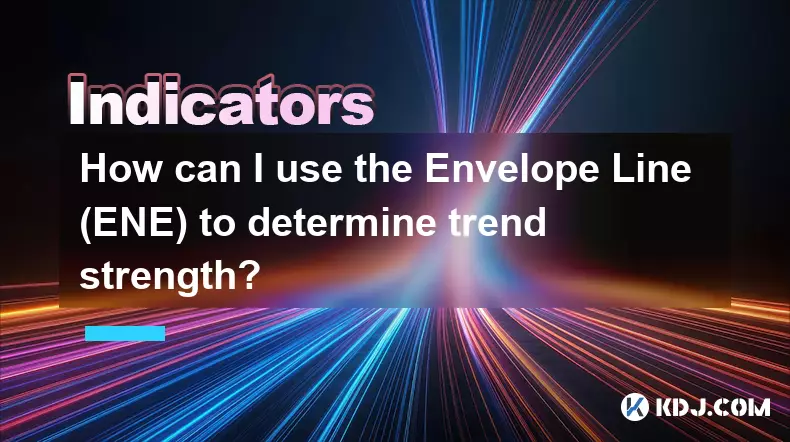
How can I use the Envelope Line (ENE) to determine trend strength?
Sep 19,2025 at 05:00pm
Understanding the Envelope Line (ENE) in Crypto TradingThe Envelope Line, commonly referred to as ENE, is a technical indicator used in cryptocurrency...
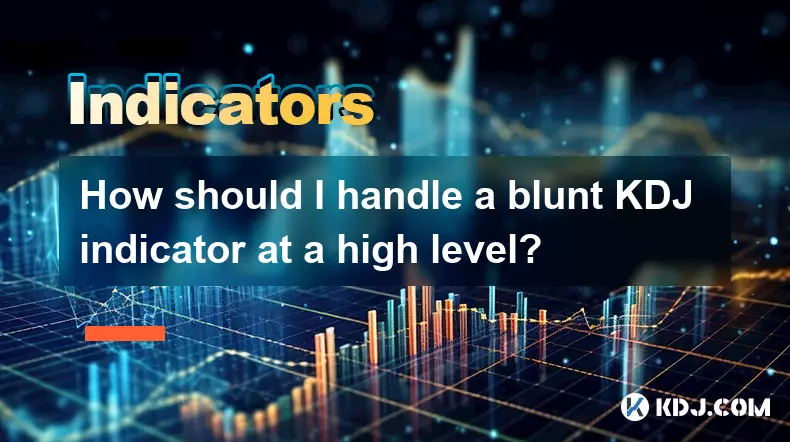
How should I handle a blunt KDJ indicator at a high level?
Sep 18,2025 at 09:19pm
Understanding a High-Level Blunt KDJ Indicator1. The KDJ indicator, widely used in cryptocurrency trading, combines the stochastic oscillator principl...

How do I interpret a golden cross above the zero line on the MACD indicator?
Sep 19,2025 at 05:18pm
Understanding the MACD Indicator Structure1. The MACD (Moving Average Convergence Divergence) indicator consists of three main components: the MACD li...

What is the Three Crows candlestick pattern? Is it a scary pattern?
Sep 18,2025 at 03:55am
Understanding the Three Crows Candlestick Pattern1. The Three Crows is a bearish reversal pattern in technical analysis, commonly observed after an up...

How can I use the psychological line (PSY) to determine market sentiment?
Sep 17,2025 at 02:19pm
Understanding the Psychological Line (PSY) in Cryptocurrency TradingThe Psychological Line, commonly referred to as PSY, is a momentum oscillator used...

What does a death cross of the RSI in the strong zone (above 50) mean?
Sep 17,2025 at 10:54pm
Understanding the Death Cross in RSI Context1. The term 'death cross' is traditionally associated with moving averages, where a short-term average cro...

How can I use the Envelope Line (ENE) to determine trend strength?
Sep 19,2025 at 05:00pm
Understanding the Envelope Line (ENE) in Crypto TradingThe Envelope Line, commonly referred to as ENE, is a technical indicator used in cryptocurrency...

How should I handle a blunt KDJ indicator at a high level?
Sep 18,2025 at 09:19pm
Understanding a High-Level Blunt KDJ Indicator1. The KDJ indicator, widely used in cryptocurrency trading, combines the stochastic oscillator principl...

How do I interpret a golden cross above the zero line on the MACD indicator?
Sep 19,2025 at 05:18pm
Understanding the MACD Indicator Structure1. The MACD (Moving Average Convergence Divergence) indicator consists of three main components: the MACD li...

What is the Three Crows candlestick pattern? Is it a scary pattern?
Sep 18,2025 at 03:55am
Understanding the Three Crows Candlestick Pattern1. The Three Crows is a bearish reversal pattern in technical analysis, commonly observed after an up...
See all articles
























